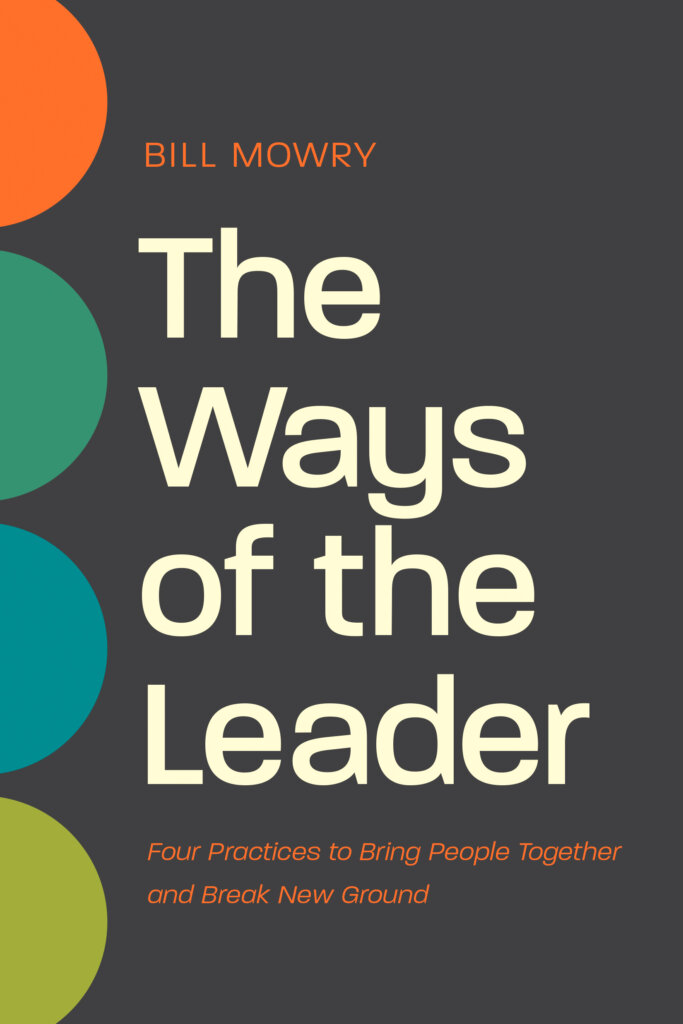
A red paper airplane diverts its path from the status quo travel of a line of white paper airplanes traveling in a straight, diagonal direction. By Worawut/stock.adobe.com
Everyday leaders are growing in the realization that cookie-cutter solutions are no longer adequate. We enjoy buying off-the-shelf solutions because it’s efficient and easy—little hard work is required. However, local challenges demand innovative local solutions. It takes work, but God has created us with an innovative nature that can be harnessed and released with the Holy Spirit’s help. We need his wisdom to bring people together and break new ground. I so appreciate Wendell Berry’s insight when he quoted John Todd, we must create “elegant solutions predicated on the uniqueness of [every] place.”[1] Collaboration and cultural wisdom will give us the insight necessary for these “elegant solutions” crafted by local leaders for local challenges.
 Today’s challenges—the fastballs of change—require new and inventive ministry forms for everyday leaders. The insights gained from lifelong learning, the wisdom from understanding our culture or context, and the collective imaginations of collaboration all serve to create that which doesn’t exist: new and innovative strategies and approaches for life and ministry. Everyday leaders must harness their God-given imaginations to wisely innovate and create new strategies and resources—the breaking of new ground—that are good and right for each context.
Today’s challenges—the fastballs of change—require new and inventive ministry forms for everyday leaders. The insights gained from lifelong learning, the wisdom from understanding our culture or context, and the collective imaginations of collaboration all serve to create that which doesn’t exist: new and innovative strategies and approaches for life and ministry. Everyday leaders must harness their God-given imaginations to wisely innovate and create new strategies and resources—the breaking of new ground—that are good and right for each context.
However, tasks remain ideals without practical tools. Over the years I’ve developed and used several tools to create new ideas. Following are four innovation tools that can bring people together to break new ground.
Tool No. 1: Picture It
Metaphors and analogies create word pictures, joining two seemingly unrelated things to craft new meanings. Analogies are formed when one thing is compared with another to highlight ways they are alike. For example, the Kingdom of Heaven is like a mustard seed, a sower, or leaven (Matthew 13). Jesus referred to himself as the bread of life, living water, and the Good Shepherd (John 4; 7; 10). Not only do these images (metaphors) lodge in our minds, but there’s also an enigmatic nature to them that draws us to think, ponder, and meditate. Our brains naturally think in pictures. Neurophysiologists working in the area of learning and memory have discovered that the brain has a section to handle and store images. Our imaginations are inextricably linked to memory—we remember the images we see. These “memory images” are stored and used by the imagination to create that which is new. Analogies and metaphors create these images and gain a greater probability that they will linger in our minds.
Tool No. 2: Think of the End User
Picture the person whom the ministry or event is targeted for. Put yourself in their minds and context. Ask some end-user questions: Who are they? Where are they? What are their interests? Why would you use this approach (an activity, event, etc.)? What would make it more learner friendly for them? How can this connect with their everyday worlds? You want to establish a strategy to connect with the neighborhood surrounding your church. Put yourself in the shoes of people living in that neighborhood—these are the end users. Then conduct a simple research exercise. Stay home on a Sunday morning and observe how many people in your neighborhood appear to be attending church. If they aren’t attending church, what are they doing? Does this say anything about how they value spirituality, faith, or God? What do you think would catch their attention to bring God into their conversation about life’s priorities? How would the answers to these questions affect how you think about evangelism in your neighborhood? Innovation starts when we consider the end user.
Tool No. 3: Ask “What If . . .?”
The what-if question explores subjects without preconceived boundaries. “What if money was not a problem?” “What if everyone—or no one—agreed with us?” “What if we had unlimited staff?” “What if our ministries doubled in size within a year?” A profitable way to generate new ideas is to fill a sheet of paper or a whiteboard with as many what-if questions as possible. After you’ve explored the topic, then select out the best question to spend time discussing. Let’s return to your neighborhood context and ask some what-if questions. What if your next-door neighbors faced a health crisis? What if your next-door neighbors began talking about the need for faith education for their children? What if your next-door neighbors began questioning the role of God in current events? What if you chose to walk your dog every night at the same time? What if you became involved in a local neighborhood association? What if you created a babysitting co-op for parents?
Tool No. 4: Switch Places
Switching places means choosing another point of view or vantage point from the one we’re used to. This can help us look at our contexts in fresh ways. We can look through the eyes of a celebrity; an actor; a pop, rap, or rock-and-roll singer; a pastor; a child; an unbelieving coworker; a fellow employee, and any other kind of person you might think of. The person’s role can be friendly or antagonistic. Sometimes an antagonist gives the best ideas. Switch places with a neighbor who constantly posts political signs in his front yard (signs you don’t agree with!). Why are politics so important to him? Do you think God plays a role in his political mindscape? Why or why not? What would happen if your neighbor came to faith in Christ? Switch places with the local workaholic—the person who leaves the house at 7:00 a.m. and returns after 7:00 p.m. What drives her work habits? How is she defining success? What could challenge her to bring God into her priorities? When we switch places with people, we begin to see the world from their points of view. This gives us insight into their feelings, beliefs, and values. What does switching places remind us of? It’s reminiscent of the incarnation—God becoming man “and [moving] into the neighborhood” (John 1:14, MSG).
Adapted from The Ways of the Leader: Four Practices to Bring People Together and Break New Ground by Bill Mowry. Copyright © 2023. Used by permission of NavPress. All rights reserved. Represented by Tyndale House Publishers, a Division of Tyndale House Ministries.
Bill Mowry is a veteran staff member with The Navigators. He holds an MA in education with an emphasis on adult education from The Ohio State University. His writing, coaching, and teaching draws from diverse ministry experiences to leaders on the college campus, in the marketplace, in the medical community, and with church leaders. Bill is passionate about helping people fulfill the Great Commission in relational, intentional, thoughtful, and creative ways. Bill is the author of The Ways of the Alongsider (navpress.com) and Walk with Me (moodypublishers.com). You can learn more about Bill at alongsider.com.
Bill and his wife, Peggy, live in Columbus, Ohio, with their dog, Ginger. They are avid yardeners creating a little spot of beauty in a fallen world where people can enjoy God’s goodness. They have two adult children and two wonderful grandchildren.
[1] 5. Quoted in Wendell Berry, Our Only World: Ten Essays (Berkeley, CA: Counterpoint, 2015), 64.














